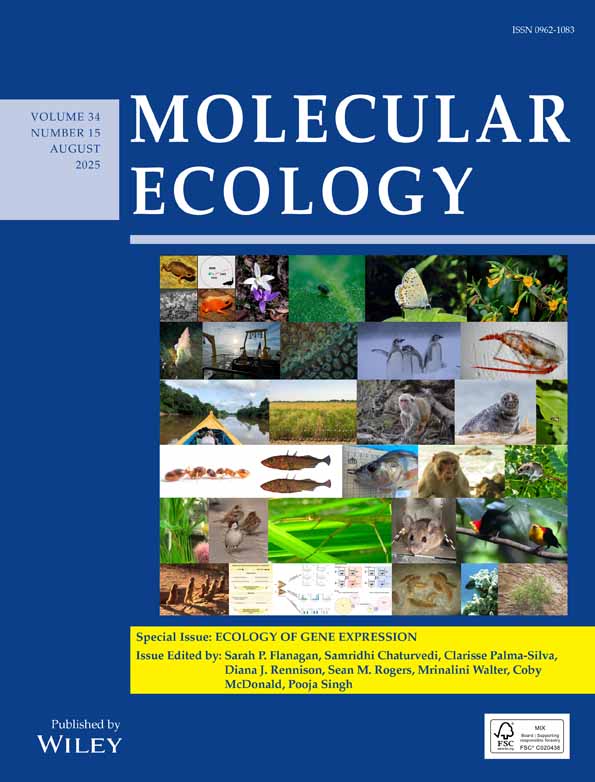Genetic structure of the global population of banana black leaf streak fungus, Mycosphaerella fijiensis
Abstract
The genetic structure of Mycosphaerella fijiensis populations around the world was examined using DNA restriction fragment length polymorphism (RFLP) markers. Allele frequencies at 19 nuclear RFLP loci were estimated in a sample of 136 M. fijiensis isolates from five geographical populations representative of banana-producing areas (South-East Asia including the Philippines and Papua New Guinea, Africa, Latin America and Pacific Islands). Within each population, gametic disequilibrium tests between the 19 nuclear RFLP loci were mainly non significant (P > 0.05), indicating that random sexual reproduction occurred in these populations. All M. fijiensis populations had a high level of genotypic and allelic diversity (H, gene diversity: 0.25–0.59). The highest levels of gene diversity were found in the two South-East Asian populations (H: 0.57 and 0.59). Most of the alleles (> 88%) detected in Africa, Latin America and Pacific Islands populations were also detected in South-East Asian populations. Furthermore, a high and significant (P < 0.05) level of genetic differentiation was observed among M. fijiensis geographical populations (overall estimate of Fst: 0.32). These results were consistent with the hypothesis that M. fijiensis originated in South-East Asia and spread recently to other parts of the world. The level of allelic diversity in M. fijiensis populations from regions other than South-East Asia was drastically reduced, indicating founder effects. The data also suggested rare occurrence of migration of M. fijiensis between continents.




